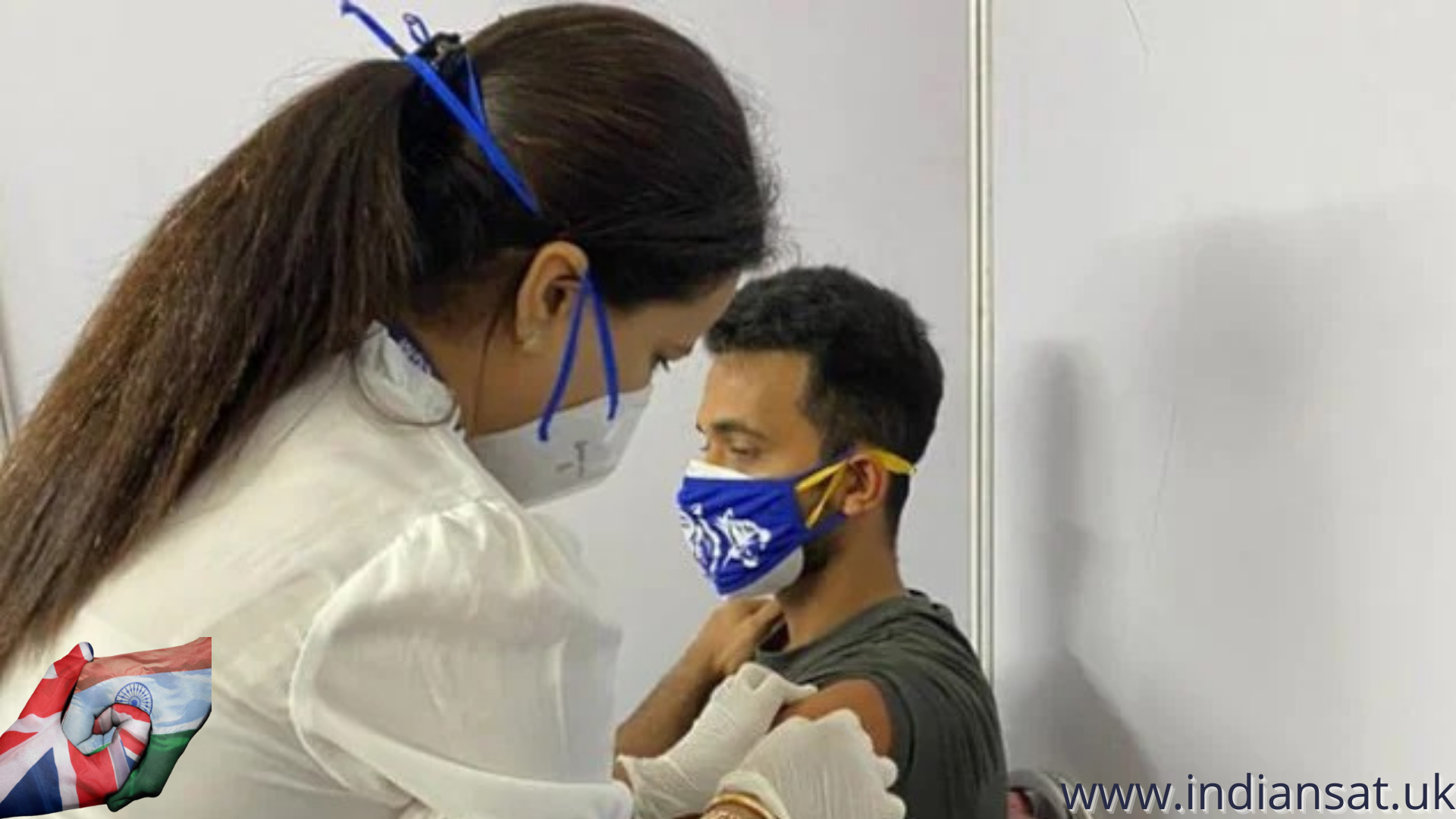The new guidelines, which will be effection from 21 June, seek to streamline the whole process of procurement, distribution and right up to the beneficiaries of the vaccines.
Inoculating a vast country such as India with a population of over 138 crore is no mean task. And if it happens in the face of a pandemic and unending political squabbling, the challenge gets complicated even further. To put it simply, India’s population is equivalent to 17.7 percent of the world population.
Vaccine drive gets a booster dose
Right from the beginning, ensuring the availability of sufficient vaccines and their adequate distribution across the length and breadth of the country have remained a massive obstacle for India. With two Indian firms — Serum Institute of India (SII) and Bharat Biotech (the manufacturers of Covishield and Covaxin, respectively) — struggling to make the vaccines available, the challenges have become stiffer.
India’s new vaccination policy, which will be in effect from 21 June, seeks to streamline the whole process of procurement and distribution and to the beneficiary of the vaccines.
“Government of India will procure 75% of the vaccines being produced by the manufacturers in the country. The vaccines procured will continue to be provided free of cost to States/UTs as has been the case from the
commencement of the National Vaccination Programme. These doses will be administered by the States/UTs free of cost to all citizens as per priority through Government Vaccination Centres,” the new guidelines said.
The digital divide that has come up due to the registration formalities on the CoWin platform is another problem leading to further delays and perhaps, according to critics, depriving a section of eligible citizens. Needless to say, all these combined became an arsenal for the opposition to launch scathing attacks on the government. Now with onsite registrations proposed for those not able to access the internet, India’s vaccination programme is expected to progress smoothly.
“The CoWIN platform provides every citizen the facility of conveniently and safely pre-booking vaccination appointments. All government and private vaccination centers would also provide onsite registration facility, available both for individuals as well as groups of individuals, for which detailed procedure is to be finalized and published by States/UTs, in order to minimize any inconvenience to citizens,” said the guidelines.
Another highlight of the revised guidelines is “to promote the spirit of “Lok Kalyan”, use of non-transferable Electronic Vouchers which can be redeemed at private vaccination centers, will be encouraged. This would enable people to financially support vaccination of Economically Weaker Sections at private vaccination centres.” This step will immensely help the financially challenged class to get inoculated.
Nevertheless, the comparison of India’s vaccine strategy with other nations may help us understand the involuted nature of the issue at hand.
United Kingdom
In a Medical Journal of Australia article, Lessons from the United Kingdom’s COVID-19 vaccination strategy, authors Andrew Harnden and Andrew Earnshaw examined the effectiveness of the vaccine strategy that the United Kingdom employed.
“The key lesson is that a simple, predominantly age based structure to the vaccination program has enabled a rapid program delivery with high vaccine uptake. The aim of the program has been clear – to prevent deaths by vaccinating those most at risk first. There has been a communication strategy from the start, including press conferences and media appearances to explain the rationale behind the prioritisation strategy. The public have understood when it was their ‘turn’ to be called and responded to invitations promptly. The bold decision to delay the second dose, allowing for more to be immunised with a first dose has proved highly effective,” the article said.
India has followed a similar pattern now with healthcare workers, frontline workers, citizens more than 45 years of age, citizens whose second dose has become due, and citizens 18 years and above getting priority in descending order starting from the first eligible group. Like the UK, India took a decisive step when it increased the gap between two shots of the Covishield vaccine by a minimum of 84 days. While international studies backed the increase in doses for better efficiency, the move also allowed SII to focus more on the first dose. On the other hand, criticism over shortage of Bharat Biotech’s Covaxin and its unavailability — even for the second dose —have made headlines.
This is a situation which the UK did not face given its paltry population of 6.8 crore, which is nearly half of Maharashtra’s population of 12.62 crore. But what India could learn from the UK strategy perhaps is “to improve access in disadvantaged communities”. There have been vaccination sites in religious buildings “such as churches and mosques as well as ‘pop up’ and mobile sites” in the UK. Religion being a sensitive matter in India, it should be exploited for mass inoculation programmes by linking it with godly duties somehow. Making pharmacies, where trained personnel are available, eligible to vaccinate will bring down the burden on private and government hospitals. Training programmes for eligible citizens to use a syringe for vaccination purpose may help deal with the shortage of medical personnel in the country. As in the UK, they can be clubbed as volunteers.
It is not that the UK vaccination programme has not faced bottlenecks. As noted by Harnden and Earnshaw, “The widespread use of social media has contributed to vaccine hesitancy, enabling the rapid spread of unfounded claims about efficacy and safety – for example a recent claim about the vaccines causing infertility.”
However, the UK developed a robust “communication strategy from the start, including press conferences and media appearances” to convince people of the importance of getting inoculated, something that India still needs to catch up with.
For vaccine hesitancy still prevails in the country. Not too long ago, in Uttar Pradesh people jumped into a river to escape the shots.
United States
While India’s revised guidelines on vaccination have made special mention of citizens whose “second dose has become due” in terms of priority, in many cases the non-availability of the second dose has posed a big problem. In the US, the Centers for Disease Control and Prevention(CDC) has mandated that for “two-dose vaccines, transfers will automatically have a second dose transfer attached to them that will occur at the appropriate interval, depending on the product. There is no way to do a single transfer without a corresponding second dose transfer”.
It is unclear if India is following a similar strategy. The US CDC has also made clear that: “Individuals aware of any potential violations of these requirements are encouraged to report them to the Office of the Inspector General, U.S. Department of Health and Human Services, by calling 1-800-HHS-TIPS or the website TIPS.HHS.GOV.” On the contrary, India lacks a similar one-window platform where irregularities in the vaccination programme can be informed.
The CDC has also said all organisations and providers participating in the COVID-19 vaccination programme “must administer COVID-19 Vaccine at no out-of-pocket cost to the recipient”. In India, private facilities are allowed to charge whereas in the US, “an office visit or other fee if COVID-19 vaccination is the sole medical service provided” is not to be charged.
While there is a case going on in the Bombay High Court regarding door-to-door vaccination versus near-home facilities, the Centre more or less shares the CDC views on the issue.
“Mobile vaccination is an umbrella term to describe various initiatives to bring vaccination services closer to communities in need on a small scale. Mobile vaccination efforts are already occurring, and more are planned, to reach specific populations, including people who are underserved, high-risk groups, essential workers, and rural communities. These sites are coordinated by public health departments in indoor or outdoor settings, with support from local public health clinics, health care providers, pharmacies, community and faith-based organizations, employers, and private-sector vaccinators,” the CDC said.
India’s revised guidelines have however remained silent on immunocompromised patients. In the US, the CDC has made special mention of the patients who undergo dialysis.
“Many dialysis patients are accustomed to receiving routine vaccinations at the dialysis clinic. By offering COVID-19 vaccines in a setting where patients are comfortable with trusted and trained vaccinators, it might be possible to increase vaccination rates for this high-risk population and ensure patients receive a complete vaccination series,” the US body said.
As in the UK, the US has also majorly involved pharmacies in its COVID-19 inoculation programme, unlike India.
“The Federal Retail Pharmacy Program is designed to leverage the strength and expertise of pharmacy partners to help rapidly vaccinate the American public. Through the program, certain retail pharmacies nationwide are receiving limited COVID-19 vaccine supply directly from the federal government. As the supply of vaccine has increased, so has the number of retail locations providing COVID-19 vaccination. Pharmacy partners use this supply to vaccinate eligible individuals at no cost,” the CDC said.
Similar to the school-located vaccination clinics in the US, many states in India are actually conducting vaccination camps in colleges for students, staff and nearby people and in schools where teachers and the non-teaching staff can participate.
Israel
Israel was one of the earliest nations that started vaccinating its citizens in December last year. The strategy to go forward with its vaccination programme has benefitted the country immensely compared to other nations of the world.
“To date, Israel has administered the most COVID-19 vaccine doses per capita in the world. More than 3.67 million Israelis have received the first dose of the BioNTech-Pfizer mRNA vaccine since the vaccination campaign began on December 20. This represents about 40% of the country’s population. More than 28% have already received the second dose. And among those over 60, more than 80% have already been vaccinated. Meanwhile, anyone over the age of 16 can be vaccinated immediately,” DW said in a report.
Speed thrilled Israel when it came to inoculation against COVID-19 and helped to bring the high rate of infection significantly down.
Compared to that, India’s vaccine drive started nearly a month later, when Manish Kumar, a 34-year-old sanitation worker at Delhi’s All India Institute of Medical Sciences (AIIMS), became the first person in the country to be vaccinated against the coronavirus disease on 16 January, according to a Hindustan Times report.
For a country with a mere nine million population, the vaccination target in Israel could never be as steep as that in India, but rapid inoculation in the Jewish country led to 56 percent fewer infections, 42 percent fewer hospitalisations and 35 percent fewer COVID-19 deaths after the second dose in the population bracket above 60 years of age.
The transparency of the process in Israel was remarkable as it even kept its agreement with Pfizer in the public domain.
Given its digitised healthcare system, the regular exchange of data between the pharmaceutical companies and the Israeli government regarding vaccination and infection has also helped a lot. It is not clear if such regular exchange programmes exist between the Central government in India and the pharmas; besides, the healthcare system in India is far from being completely digitised.
China
China is still steadfastly defending itself from a debatable notion whether the SARS-CoV-2 virus originally made its way out from the Wuhan Institute of Virology to infect the world way back in 2019. While several theories have sprung up about the origins of the virus, this has not stopped the country from aggressively pursuing its COVID-19 vaccination programme even as the debate over their efficacy still rages on.
China’s first vaccine made by state-owned firm Sinopharm and CoronaVac, manufactured by Sinovac, “account for the bulk of shots given in China, which has so far inoculated 243 million people”, according to Nature. The inoculation drive is going in full swing in China despite a lack of transparency on various technical aspects of the vaccines.
The country began its vaccination programme in December last year and aimed to “vaccinate the eligible population as widely as possible and gradually build an immune barrier within the whole population to control the epidemic”, said a Xinhua report.
Where the Chinese vaccine strategy is remarkably different from the Indian counterpart is China’s approval to vaccinate everyone from three-year-old onwards. In India, the lowest age of vaccination is 18 years of age.
“China has begun to allow those aged between three and 17 years old to get shots of COVID-19 vaccines, making it the first country to approve these vaccines for such a young age group. Chinese observers said the country will follow the plan step-by-step out of safety concerns and based on production capacity,” the Global Times said in a report.
China has also continued to supply vaccines globally and has so far assisted 53 developing countries and exported vaccines to 22 countries, the Xinhua report said.
Unlike in India, China is adapting unique small incentives to motivate its citizens towards vaccination.
“A small pack of eggs, a family retail coupon, or other small items have become common post-vaccination thank-you gifts in some residence communities. Some inoculation teams in places like Shanghai offer door-to-door services, stepping into skyscrapers to provide on-the-spot shots to busy white-collar workers. Buses in many places show videos about vaccinations…. Village officials hung banners at gates and used loudspeakers to motivate inoculation,” said a report in the Global Times. Then there are bilingual posters, radios and WeChat posts to promote the significance of vaccination.
In India, a similar drive with such national urgency is yet to be seen except in smaller pockets here and there. A vaccine campaign if mounted like a Lok Sabha election campaign is bound to bear fruit in one or the other. Who better to do it than the ruling party in India which is already an expert in campaigns!
No looking back
India’s vaccine drive against COVID-19 has remained and continues to be a litmus test for the government both at the Central and state levels.
“Government of India’s commitment to the vaccination program has been unwavering and proactive from the beginning, from strengthening Research and Development capacity, to encouraging and enabling manufacturing and vaccinating each and every adult Indian safely, as fast as possible,” the revised guidelines said.
But for it to be successful the “effective and efficient participation of States/UTs and the people at large” is a must.
![]()






